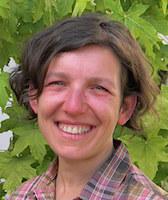Ilaria Baneschi

| First Name | Ilaria |
|---|---|
| Last Name | Baneschi |
| Unit | Pisa |
| ilaria.baneschi(at)igg.cnr.it | |
| Role | Senior Technologist |
| Phone | 050 6212343 |
| Research Gate Link | http://www.researchgate.net/profile/Ilaria_Baneschi |
EDUCATION
- 1997-2003 B.A. in Environmental Sciences at the University of Pisa, Faculty of Mathematic, Physic and Natural Sciences, with the thesis: “Studio idrochimico e ambientale delle acque superficiali del sistema lacustre del Massaciuccoli”
- 2003-2006 European-PhD in Environmental Sciences at the University of Venice, Co-Tutored with Université de Paris-Sud XI, Faculté des Sciences d’Orsay, with a thesis titled: “Geochemical and environmental study on a coastal ecosystem: Massaciuccoli lake (Northern Tuscany, Italy)”.
- 2007-2008 Research fellowship at the UFZ, Leipzig (Germany) titled: “The Sulphur-34 isotope variation on the water of a mining lake in Lausatia”.
- 2008-2010 Temporary Researcher at the IGG-CNR, Pisa. Title: “Study the water and sediment pollution on lake and transition environments, in relation to air input and using chemical and isotopic tracer”
- 2010-2013 Temporary Researcher at the IGG-CNR, Pisa. Title “Mobility and speciation of heavy metals in the water-serpentinites interaction”, project POR FSE 2007-2013 “REservoir Serpentinitici toscani: da Potenziale Inquinante a Risorsa Ambientale (RESPIRA)
- 2013-today Researcher Scientist (temporary position) at the IGG-CNR, Pisa
SCIENTIFIC ACTIVITY
- My research interests are interdisciplinary and centre on the interactions of the geo-, bio- and hydrosphere through geological time and their influence on climate and earth surface processes. I’m interested in using multiple proxy data in studying dynamics of climate, hydrology and carbon cycle and their connections. The long-term goal of my research program is to further integrate the multidisciplinary data in understanding earth system processes and in solving paleoecologic, paleoclimatic and paleohydrologic problems and to link modern processes to the record of environmental changes.
- I am specialized in environmental geochemistry and biogeochemistry of aquatic system and sediments, with a focus on human impact. My current scientific activity investigates chemical and biochemical processes that occur in lakes and wetlands in order to interpret changes in the geochemistry of lake sediments, to identify human impact and to reconstruct environmental and climatic changes, using also the stable isotopes of carbon, nitrogen, hydrogen and oxygen as tracers.
- I am involved into research projects about geochemical and palaeo-environmental reconstructions on remote areas, like Patagonia and Antarctica, and I am working with researchers of the Pisa University on climatic evolution study of Central Mediterranean integrating different proxies records.
SELECTED PUBLICATIONS
- Baneschi I., Dallai L.; Giazzi G.; Guidi M.; Krotz L. (2013). A method for the definition of the carbon oxidation number in the gases dissolved in waters and the redox variations using an elemental analyser (FlashEA 1112). Preliminary data from a stratified lake. J. Geochemical exploration., 124: 14-21.
- Zanchetta G., Van Welden A., Baneschi I., Drysdale R., Sadori L., Roberts N., Giardini M., Beck C., Pascucci V. (2012). Multiproxy record for the last 4500 years from Lake Shkodra (Albania/Montenegro). J. Quaternary Science, 27: 780-789.
- Pistocchi C., Silvestri N., Rossetto R., Sabbatini T., Guidi M., Baneschi I., Bonari E., Trevisan D. (2012). A Simple Model to Assess Nitrogen and Phosphorus Contamination in Ungauged Surface Drainage Networks: Application to the Massaciuccoli Lake Catchment, Italy. Journal of Environmental Quality 41 (2): 544-553.
- Lorenzini S., Baroni C., Baneschi I., Salvatore M.C., Fallick A.E., Hall B.L. (2014). Adélie penguin dietary remains reveal Holocene environmental changes in the western Ross Sea (Antarctica). Palaeogeography, Palaeoclimatology, Palaeoecology, 395: 21–28
- Leng M.J., Baneschi I., Zanchetta G., Jex C.N., Wagner B., Vogel H. (2010). Late Quaternary palaeoenvironmental reconstruction from Lakes Ohrid and Prespa (Macedonia/Albania border) using stable isotopes. Biogeosciences, 7: 3109-3122.